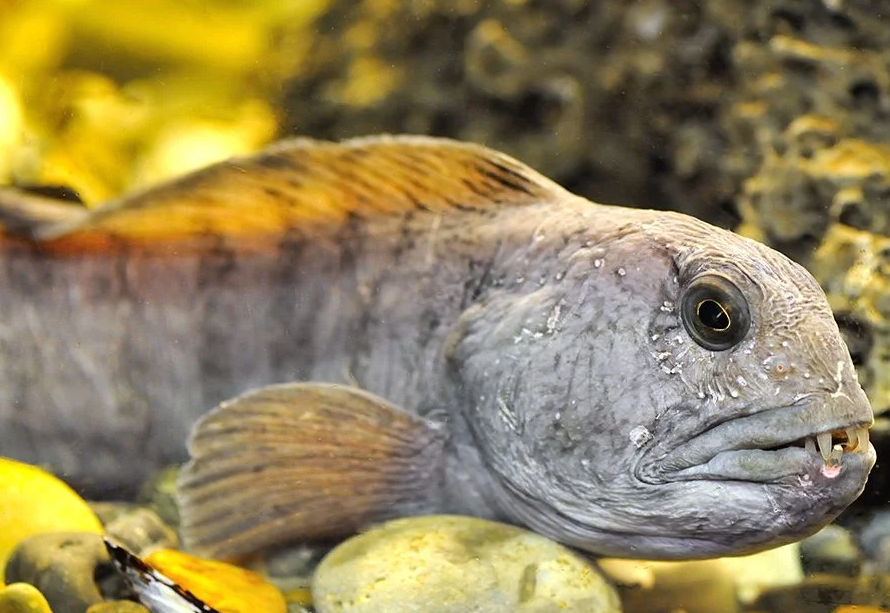
Atlantic wolffish are voracious predators, and the large head, powerful jaws, and large canine teeth are all used to hunt and eat hard-bodied or spiny invertebrates, such as sea urchins, crabs, large marine snails, etc. They reach lengths of up to five feet (1.5 m).
Atlantic wolffish are usually solitary but form pairs during the breeding season. They mate via internal fertilization, and females spawn relatively large eggs, which both sexes guard until they hatch. This level of parental care is rare among fishes. Individuals have even been known to mate and nest in public aquariums, guarding their eggs for several months.
These fish are restricted to the cold waters of the north Atlantic Ocean, and their blood contains several natural compounds that prevent it from freezing. Atlantic wolffish are good table fare, and throughout its range, it is fished by both recreational fishers and occasional commercial net fishers. It is slow to mature and likely naturally rare, and over the last several decades, scientists have observed steep declines in its numbers. In the United States it is considered a species of concern. As many ecologists consider the Atlantic wolffish to be a keystone species in north Atlantic Ocean food webs, regulating populations of sea urchins and other invertebrates, it is important to consider conservation measures for this rocky reef predator.